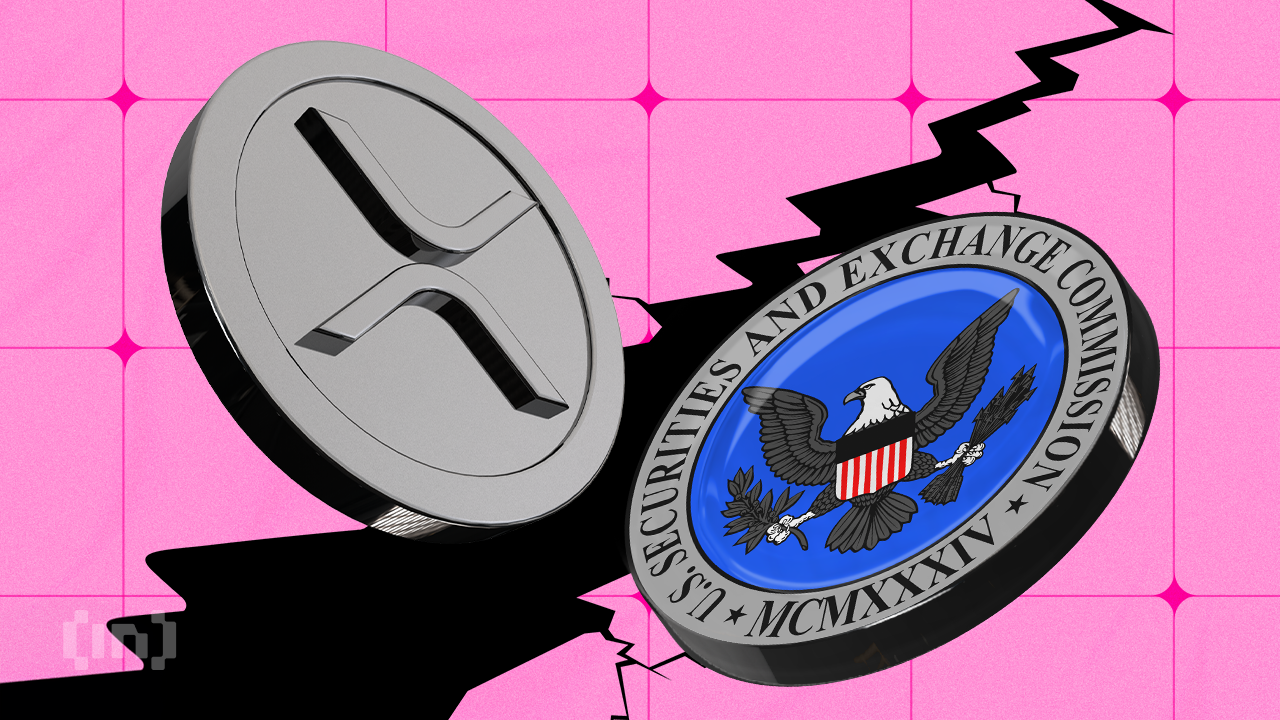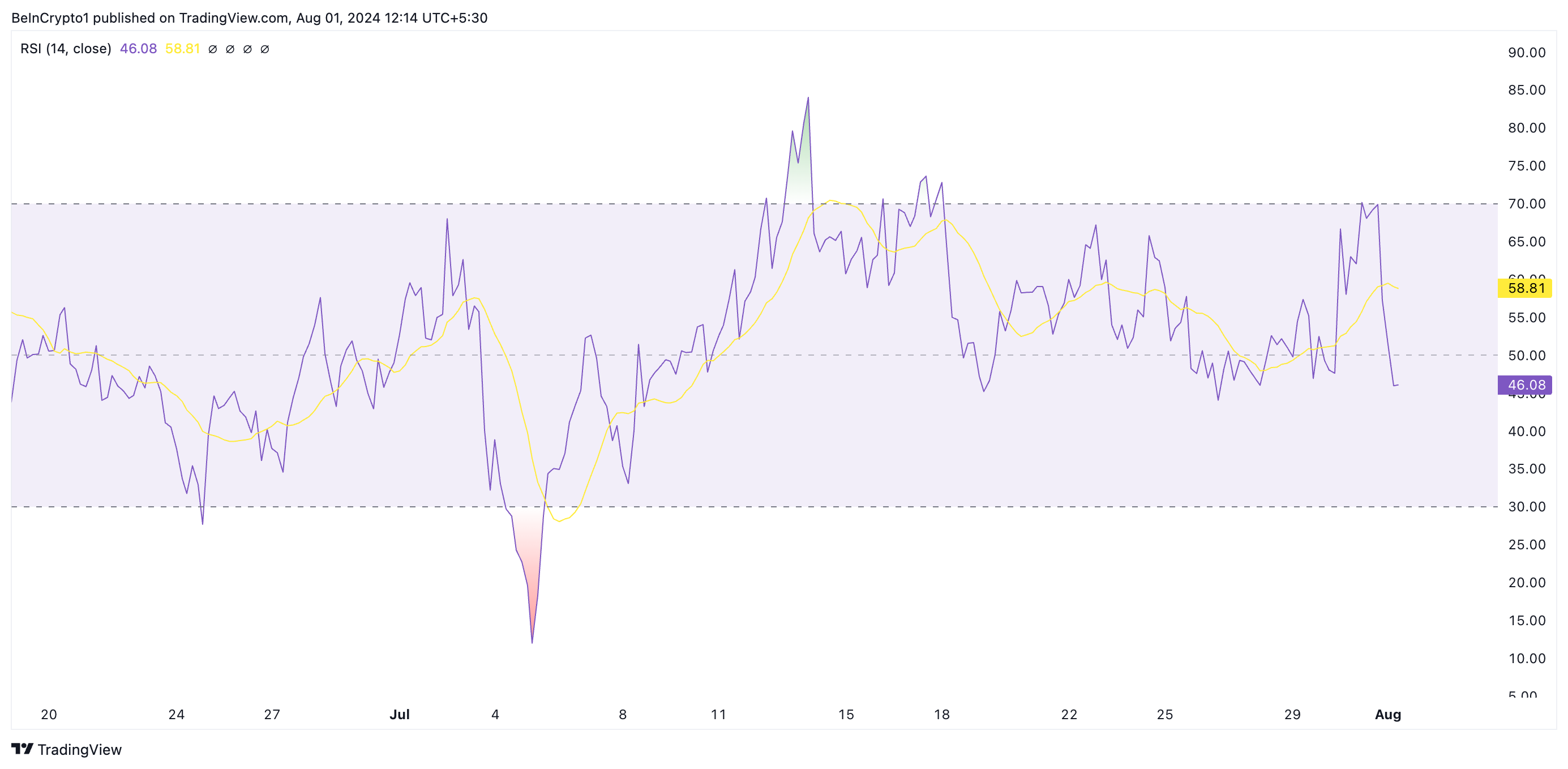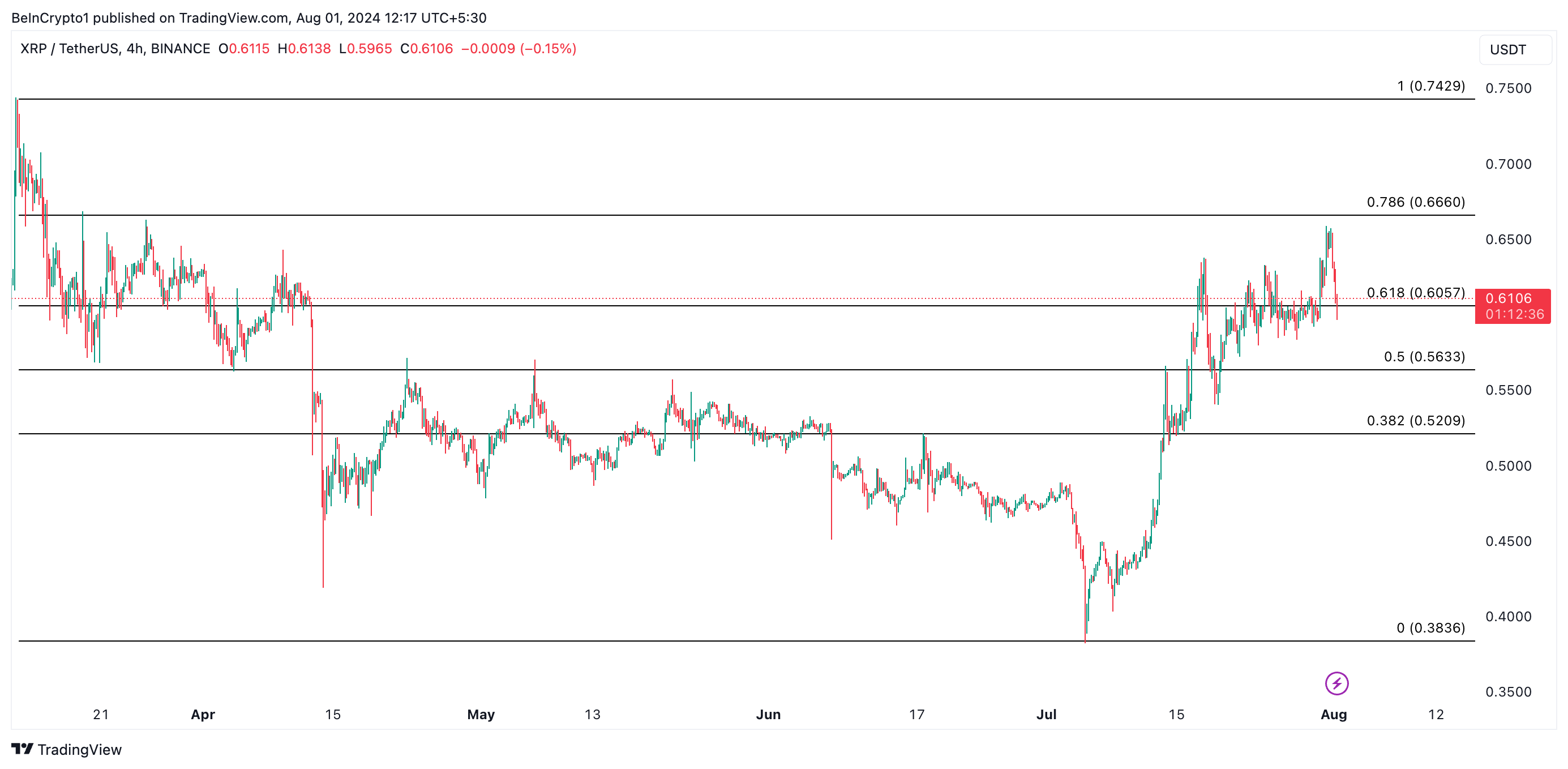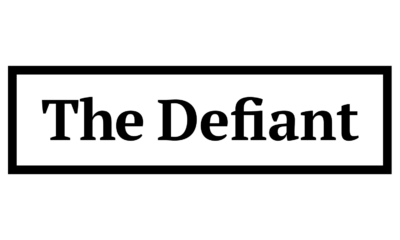Markets
The US House is preparing to vote on the first stand-alone cryptocurrency market structure bill

The US House of Representatives is poised to vote in favor of a cryptocurrency market structure bill for the first time, in a symbolic effort to fundamentally reshape the country’s digital asset regulatory landscape.
The Financial Innovation and Technology for the 21st Century Act, sponsored by members of the House Financial Services and House Agriculture committees, will begin seeing votes Wednesday afternoon, where it is expected to pass with a bipartisan majority.
The bill, called FIT21, would grant the Commodity Futures Trading Commission (CFTC) greater spot market authority over digital assets considered commodities, while creating new jurisdictional lines for the Securities and Exchange Commission (SEC). Crypto firms and issuers of digital assets would have a framework for determining whether and how their assets are securities under the terms defined by the bill, which in turn would allow them to know who their lead regulator might be.
Rep. Patrick McHenry (R-N.C.), who chairs the Financial Services Committee, told reporters Tuesday that he hopes for “a substantive vote” in favor of the legislation to demonstrate that there is real momentum for digital assets legislation , one week later. after the Senate voted in favor of a House resolution that overturned the SEC’s accounting guidelines.
The bill is expected to pass, with a handful of Democrats joining the majority of Republicans in voting for the bill. The bill’s path through the Senate is less clear, and the White House said Wednesday that it opposes the legislation, even as President Joe Biden he did not threaten a veto.
The bill has been the subject of numerous discussions in recent days.
Rep. Jim Himes (D-Conn.), one of the at least nine Democratic lawmakers who said they would support the bill said, “Look[ed] I look forward to working with my colleagues on the Financial Services Committee on our continued oversight of this issue.”
“FIT21 represents a major step forward in the regulation of the cryptocurrency industry and a significant improvement over the status quo,” he said in a statement.
Rep. Ro Khanna (D-California) announced will vote in favor of the bill shortly before Wednesday’s vote, saying “we need blockchain innovation here in America.”
Rep. French Hill (R-Ark.) told reporters Tuesday that the bill creates a “5-step test for whether something is a decentralized blockchain or not” and includes a roadmap the regulator can use.
In comments to the House Rules Committee, he said the lawmakers who developed the bill worked with regulators – including the SEC – for more than a year, incorporating their feedback into the legislation.
“We have included provisions to mitigate conflicts of interest. We impose capital and other necessary requirements on intermediaries. And we impose higher standards for custody,” he said.
There is also an interim process, under which companies must submit a “notice of intent to register” to agencies, he said.
Opposition to the bill, however, begins within the House Financial Services Committee itself.
Rep. Maxine Waters (D-California), the committee’s ranking member, called the bill “not fit for purpose” and told the House Rules Committee on Tuesday that “it is perhaps the worst deregulation proposal and more harmful than I have ever seen.” seen for a long time”, comparing it to the Commodity Futures Modernization Act. The CFMA, Waters charged, deregulated certain derivative products that later “blew up our economy when… AIG collapsed.”
FIT21 does not give the CFTC more authority to crack down on fraud or other crimes, despite placing the agency in charge of overseeing digital commodities, he said. The bill also eliminates disclosure requirements after 180 days, meaning the regulator cannot force companies it is supposed to regulate to provide audited financial statements beyond that deadline.
“What is even more problematic is the bill’s definition of listing ‘contractual investment assets,’” he said. “Securities that meet this definition would be moved into a regulatory vacuum, with no primary regulator and virtually no laws and regulations to speak of. Importantly, the investment contract’s definition of assets is not limited to cryptocurrencies, and it would be quite easy for both crypto and traditional securities must be formatted to meet this definition.”
A group of unions, consumer protection organizations, academics and others were sent a public letter to House Speaker Michael Johnson (R-La.) and Minority Leader Hakeem Jeffries (DN.Y.), asking them to vote against the bill and presenting a list of concerns similar to Gensler’s.
The letter took aim at the industry more broadly, stating that cryptocurrencies “still struggle to demonstrate viable use cases outside of speculative investing” and referencing various ongoing bankruptcies and civil and criminal litigation.
“The sector has recovered superficially this year, in part due to the controversial approval of BTC spot ETPs by the Securities Exchange Commission,” the letter reads. “However, the scams, hacks, thefts, instability, reckless promotional activities and regulatory evasion present during the last cryptocurrency bull market remain endemic to the industry today.”
The letter was signed by organizations including the AFL-CIO, Americans for Financial Reform, Revolving Door Project, National Consumer Law Center, and more than 30 other people and 10 individuals.
Echoing Gensler, the groups said they were concerned that the bill would weaken existing securities laws to the point that even non-crypto companies could “evade stricter oversight” by tying themselves to a decentralized network (or at least claiming to be linked to a decentralized network). net). While the bill gives more authority to the CFTC, the letter says that authority “is vague,” so much so that it could weaken other agencies like the Consumer Financial Protection Bureau.
“All in all, we believe that this bill, as written, introduces a political ‘cure’ that would be far worse than the disease and would create significant harm within and well beyond the cryptocurrency industry,” the letter reads.
Supporters of the bill argue that the legislation is needed to support companies’ efforts to “build a better financial services system and a better internet.”
“Since the birth of the Bitcoin network in 2009, the blockchain and digital asset industry has existed without targeted market regulation,” a letter submitted by the Blockchain Association, a lobbying group, he said. “The absence of clear rules creates confusion in the marketplace for companies and leaves users and consumers without protection.”
The letter, signed by groups including stablecoin issuer Circle, Ethereum incubator ConsenSys, venture capital firm Digital Currency Group, exchanges such as Kraken and 50 other industry companies, goes on to argue that the “lack of clarity” risks leaving the United States behind. in the “global technology race”.
SEC Chairman Gary Gensler published it a declaration he opposed the legislation on Wednesday. In it, he raised the specter of various cryptocurrency crashes and frauds, suggesting that the bill could allow even traditional pump and dumpers or penny stock dealers to escape oversight by branding themselves as users of decentralized networks.
“We should make the political choice to protect the investing public instead of facilitating the business models of non-compliant companies,” he said.
Markets
Bitcoin, Ethereum See Red as Markets Crash on Volatility

Bitcoin AND Etherealalong with the rest of the top 10 cryptocurrencies by market cap, appear to be in hibernation on Thursday morning.
At the time of writing, the Bitcoin Price is still below $65,000 and 2.2% lower than it was this time yesterday, according to CoinGecko data. Things are worse for the Ethereum Pricewhich is 3.7% lower than 24 hours ago at $3,185.22. The drop in ETH’s price is identical to that of Lido Staked Ethereum (stETH), a liquid staking token for Ethereum.
In recent days, falling prices have led to the liquidation of derivative contracts worth $225 million, according to Coin glassAnd about half of that, about $100 million, was liquidated in the last 12 hours.
When a trader is liquidated, it means that their position in the market has been forcibly closed by an exchange or brokerage due to a margin call or insufficient collateral. Margin is especially important when it comes to leveraged positions, which allow traders to control a multiple of their deposit, such as opening a $10,000 position with only $1,000 in their account.
Now that Bitcoin has been in the red for three days in a row, there is a chance that the world’s oldest and largest cryptocurrency could sink even further, BRN analyst Valentin Fournier said in a note shared with Decrypt.
“Bitcoin has closed in the red for three days in a row, with one-way trading showing limited resistance from bulls. Ethereum had a slightly positive Monday with strong resistance from bears who have won the last two days,” he wrote. “This momentum could take BTC to the $62,500 resistance or even the $58,000 territories.”
Looking ahead, Fournier said BRN’s strategy will be to “reduce exposure to Bitcoin and Ethereum and find a better entry point after the dip.”
This is despite Federal Reserve Chairman Jerome Powell’s comments yesterday on interest rates being widely regarded as accommodating and indicative of FOMC rate cuts in September.
Singapore-based cryptocurrency trading firm QCP Capital said the rally in stocks, which sent the S&P 500 up 1.6% from Wednesday’s close, was not felt in cryptocurrency markets.
“Cryptocurrencies have seen a broad sell-off overnight and into this morning,” the firm wrote in a trading note. “The market remains poised as traders pay close attention to daily ETH ETF outflows and further supply pressure from Mt Gox and the US government.”
Meanwhile, the other top-ranking coins are showing mixed performance.
Solana (SOL) is down 7.2% since yesterday to $169.13. Things are even worse for its most popular meme coins. In the past 24 hours, the most popular meme coins Dogwifhat (WIF) are down 12% and BONK (BONK) is down 9%, according to CoinGecko data.
Their dog-themed competitor, Ethereum OG Dogecoin (DOGE), the only meme coin in Coingecko’s top 10, is down nearly 4% since yesterday and is currently trading at $0.1205.
XRP (XRP) dropped to $0.608, which is 7% lower than it was at this time yesterday.
Binance’s BNB Coin (BNB) has kept pace with BTC and is currently trading at $571, down 2.4% from yesterday. Toncoin (TON), the native token of The Open Network, is down just 0.4% over the past day.
This leaves the stablecoins USDC (USDC) and Tether (USDT), both of which are stable as they maintain their 1:1 ratio with the US dollar.
Markets
XRP Market Activity Drops During Ripple-SEC Talks: Price Steady

The Securities and Exchange Commission (SEC) will hold another closed-door meeting with Ripple on Thursday, as the market hopes for a possible resolution to the legal battle between the two entities.
However, the cryptocurrency market remains relatively bearish, with the price and trading volume of XRP down in the last 24 hours.
Ripple holders take no risk
At press time, XRP is trading at $0.60. The altcoin’s price has dropped 6% over the past 24 hours. During that time, trading volume was $27 million, down 27%.
The SEC met before with the digital payment company on July 25. While the outcome of that meeting remains unknown, the Sunshine Act Notice for Thursday’s meeting includes one additional topic of discussion from the July 25 closed meeting: the instituting and resolving injunctive relief. That has market participants speculating whether a settlement is imminent.
In an exclusive interview with BeinCrypto, Ryan Lee, Lead Analyst at Bitget Research, noted that:
“This meeting will discuss possible resolution options for the Ripple Lawsuit. The founder of Ripple Labs said that a legal settlement could be announced soon. If an official settlement plan is released, it could positively impact XRP’s price movement.”
However, an assessment of XRP’s price movements on a 4-hour chart shows a spike in bearish bias as the market awaits the outcome of this crucial meeting. Its Moving Average Convergence/Divergence (MACD) indicator readings show that its MACD line (blue) has crossed below its signal line (orange).
XRP 4 Hours Analysis. Source: Trading View
Traders use this indicator to gauge price trends, momentum, and potential buying and selling opportunities in the market. When an asset’s MACD is set this way, it is a bearish signal that suggests selling activity is outweighing buying momentum.
Additionally, the altcoin relative strength index (RSI), at 46.08, is currently below its neutral 50 line and in a downtrend. This indicator measures overbought and oversold market conditions for an asset.
To know more: How to Buy XRP and Everything You Need to Know
 XRP 4 Hours Analysis. Source: Trading View
XRP 4 Hours Analysis. Source: Trading View
At 43.83 at the time of writing, XRP’s RSI suggests a growing preference among the market participants for tokin distribution.
XRP Price Prediction: Derivatives Traders Exit Market
The XRP derivatives market has also seen a decline in trading activity over the past 24 hours. According to Coinglass, derivatives trading volume has plummeted 18% and open interest has dropped 10% during that period.
Open interest refers to the total number of outstanding derivative contracts, such as options or futurethat have not yet been resolved. When it drops, traders close their positions without opening new ones. This is a bearish signal that reflects a lack of confidence in any potential positive price movement.
According to Lee, the outcome of the meeting with the SEC “would have a significant impact on the price movement of the token.” If the outcome is favorable, the price of the token could rise towards $0.75 in August.
To know more: Ripple (XRP) Price Prediction 2024/2025/2030
 XRP 4 Hours Analysis. Source: Trading View
XRP 4 Hours Analysis. Source: Trading View
On the other hand, if no favorable resolutions are reached, the price could plummet to $0.50.
Disclaimer
In line with the Trust Project guidelines, this price analysis article is for informational purposes only and should not be considered financial or investment advice. BeInCrypto strives to provide accurate and unbiased reporting, but market conditions are subject to change without notice. Always conduct your own research and consult a professional before making any financial decisions. Please note that our Terms and conditions, Privacy PolicyAND Disclaimers They have been updated.
Markets
Bitcoin’s Dominance Hits Three-Year High, But Analysts Say Altcoins Are Ready to Rebound

Bitcoin is now the dominant force in the cryptocurrency market, surpassing 53% of the total cryptocurrency market, a stronger share than it has been in the past three years.
Bitcoin’s market cap now stands at $1.27 trillion, second according to CoinGecko data. In contrast, the total cryptocurrency market cap is $2.43 trillion, with Ethereum occupying 15.9% of the market, worth $389 billion.
Bitcoin’s rise to dominance this year is unusual, as altcoins typically do better than Bitcoin in a bull market. While meme coins made a strong comeback during Bitcoin’s rally to all-time highs earlier this year, the so-called “wealth effect” It has not been appreciated as much by mid-range coins, such as Ethereum and Cardano.
“ETF flows fundamentally alter market dynamics,” he wrote Meltem Demirors, former chief strategy officer at CoinShares, tweeted Wednesday: “BTC gains no longer translate to alts and the longer tail of crypto.”
Bitcoin’s takeover has continued even as the market cap of Tether (USDT) continues to grow, the world’s largest stablecoin and the third-largest cryptocurrency after BTC and ETH. Stablecoins are backed by fiat currencies and are excluded from some measures of Bitcoin dominance due to fundamentally different value models.
The surge continued to pace even after the launch of Ethereum spot ETFs last week, which ironically culminated in a news sell-off event, and net outflows from new investment products since they were launched. This went against the predictions of K33 Search so far, which predicted that ETFs would catalyze ETH’s growth over the next five months.
Despite the poorer performance of the alts, there is reason to believe that they are ready to bounce back very soon.
CryptoQuant CEO Ki Young Ju said Tuesday that whales are “preparing for the next altcoin rally,” as limit buy orders for assets other than BTC and ETH are on the rise.
The executive shared a chart showing how the “cumulative difference between purchase volume and sales volume” has increased in recent months.
“The indicator measures the difference between buy and sell orders over a year,” CryptoQuant told Decrypt. A buy/sell order is a pre-set request to buy or sell a cryptocurrency if it hits a certain price level, which creates resistance and support levels.
“If the trend is up, it means that more people are placing buy orders, showing strong interest in buying,” CryptoQuant said.
By Ryan-Ozawa.
Markets
XRP and SOL Retrace as BTC Price Drops to 2-Week Lows (Market Watch)

After Monday’s crash, in which BTC fell by several thousand dollars, the scenario has repeated itself once again in the last 12 hours, with the asset falling to a 2-week low of $63,300.
Alt coins followed suit, with most of the market in the red today. SOL and XRP lead the way from the higher cap alts.
BTC Drops To $63.3K
After a violent Thursday last week, when BTC crashed to $63,400, the asset went on the offensive over the weekend and surged above $69,000 on Saturday, as the community prepared for Donald Trump’s appearance at the 2024 Bitcoin Conference in Nashville.
His speech was followed by more volatility before the cryptocurrency settled around $67,500 on Sunday. Monday started off rather optimistically for the bulls as bitcoin hit a 7-week high of $70,000.
However, he failed to maintain his run and conquer that level decisively. On the contrary, he was rejected bad and dropped to $66,400 by the end of Monday. Tuesday and Wednesday were less eventful as BTC remained still around $66,500.
The last 12 hours or so have brought another crash. Bears have pushed the leading digital asset down hard, which has fallen to a 2-week low of $63,300 (on Bitstamp), leaving over $200 million in liquidations.
Despite the current rebound to $64,500, BTC’s market cap has fallen to $1.270 trillion, but its dominance over alts is recovering and has reached 52.6%.
Bitcoin/Price/Chart 01.08.2024. Source: TradingView
The Alts are back in red
Ripple’s native token has been at the forefront of the market challenge in recent days as pumped up to a multi-month high of over $0.66. However, its run was also interrupted and XPR fell by more than 6% in the last day to $0.6.
The other big loser among the larger-cap alternatives is SOL, which has lost 8% of its value and is now struggling to get below $170.
The rest of this altcoin cohort is also in the red, with ETH, DOGE, BNB, AVAX, ADA, SHIB, and LINK all seeing drops between 2 and 5%.
The total cryptocurrency market cap lost another $70 billion overnight, falling below $2.4 trillion today on CG.
Cryptocurrency Market Overview. Source: QuantifyCrypto SPECIAL OFFER (sponsored)
Binance $600 Free (CryptoPotato Exclusive): Use this link to register a new account and receive an exclusive $600 welcome offer on Binance (full details).
LIMITED OFFER 2024 on BYDFi Exchange: Up to $2,888 Welcome Reward, use this link to register and open a 100 USDT-M position for free!
Disclaimer: The information found on CryptoPotato is that of the authors cited. It does not represent CryptoPotato’s views on the advisability of buying, selling, or holding any investment. We recommend that you conduct your own research before making any investment decisions. Use the information provided at your own risk. See Disclaimer for more information.
Cryptocurrency Charts by TradingView.
-

 News11 months ago
News11 months agoBitcoin soars above $63,000 as money flows into new US investment products
-

 DeFi11 months ago
DeFi11 months agoEthena downplays danger of letting traders use USDe to back risky bets – DL News
-

 News11 months ago
News11 months agoFRA Strengthens Cryptocurrency Practice with New Director Thomas Hyun
-

 DeFi11 months ago
DeFi11 months agoZodialtd.com to revolutionize derivatives trading with WEB3 technology
-

 Markets11 months ago
Markets11 months agoBitcoin Fails to Recover from Dovish FOMC Meeting: Why?
-

 DeFi1 year ago
DeFi1 year ago👀 Lido prepares its response to the recovery boom
-

 DeFi1 year ago
DeFi1 year agoPancakeSwap integrates Zyfi for transparent, gas-free DeFi
-

 DeFi1 year ago
DeFi1 year ago🏴☠️ Pump.Fun operated by Insider Exploit
-

 Markets1 year ago
Markets1 year agoa resilient industry that defies market turbulence
-

 DeFi1 year ago
DeFi1 year ago👀SEC Receives Updated Spot Ether ETF Filings
-

 DeFi1 year ago
DeFi1 year ago🚀 S&P says tokenization is the future
-

 DeFi1 year ago
DeFi1 year ago⏱️ The SEC is not rushing the commercialization of Spot Ether ETFs















